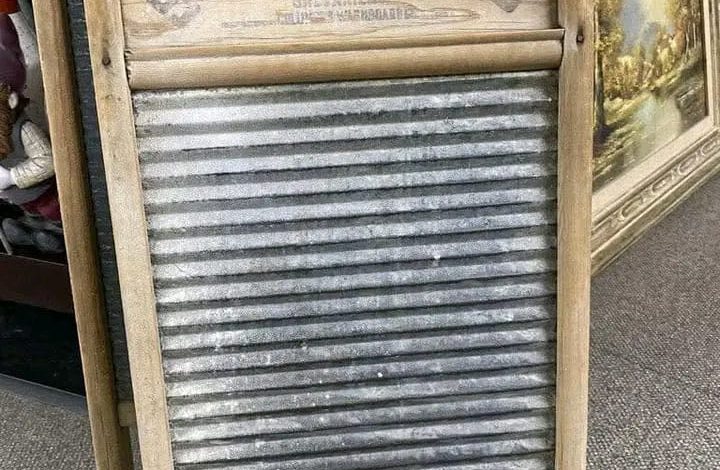The Humble Washboard: A Symbol of Hard Work and Simpler Times

ADVERTISEMENT
The Humble Washboard: A Symbol of Hard Work and Simpler Times
Introduction:
Before the hum of electric washing machines became a household norm, laundry day looked very different. Pictured above is a traditional washboard—a once-essential tool in homes around the world. Its simple design, with a wooden frame and ribbed metal surface, tells a story of resilience, domestic labor, and the ingenuity of earlier generations. This unassuming object was not just for cleaning clothes—it was a cornerstone of daily life.
Main Content:
The washboard shown here is a classic example, likely from the mid-20th century, with the brand name “Sunnyland” faintly stamped into its top wooden panel. Built to last, it consists of a sturdy wooden frame supporting a corrugated metal surface. Clothes would be soaked in soapy water and scrubbed across the ridges to loosen dirt and stains, a process requiring both time and physical effort.
Washing clothes with a board like this wasn’t just a chore—it was a ritual. Often done outdoors or in a laundry basin, it was a task that required patience and strength, especially in large households. Many families passed these washboards down through generations, treating them as a symbol of the homemaker’s dedication.
Beyond their domestic use, washboards also found a second life in music. They became popular rhythm instruments in blues and folk bands, particularly in the American South. Played with thimbles or spoons, they added a unique percussion sound that brought lively character to early American music.
Collectors today prize these antique washboards not only for their nostalgic value but also for their craftsmanship. Whether hanging in a farmhouse kitchen, displayed in a laundry-themed décor, or used in musical performances, vintage washboards like this one serve as a tactile reminder of the past.
ADVERTISEMENT
Conclusion:
The vintage washboard is more than a relic—it’s a tribute to the hands that worked tirelessly, scrubbing and rinsing, caring for their families one garment at a time. In today’s fast-paced world, it reminds us of an era where labor was personal, manual, and deeply human. This simple tool, once an everyday object, now stands as a symbol of perseverance, history, and the beauty of humble invention.




